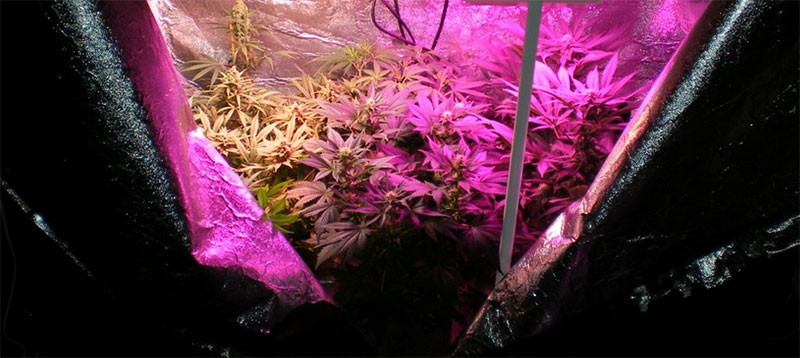Growing different cannabis strains at the same time

Every grower has to decide at the beginning of the cultivation whether he wants to grow only one variety or several at once. It is important whether plants from seeds, cuttings, feminised or regular seeds are to be used.
In commercial cultivation, growers opt for uniform plants in terms of growth structure, height, flowering time, nutrient requirements, etc. Cultivating only one variety grown from clones increases efficiency, saves time and enables the cultivation of homogeneous plants that all have the same characteristics. All plants then need the same nutrients and can all be supplied in the same way. The harvest of all plants can be done at the same time.
Even the highest quality varieties that have been elaborately bred show phenotype variability, i.e. different phenotypes. Plants grown from excellent regular seeds usually have two or more different phenotypes. Clones of the same mother plant have the lowest phenotype variability. Higher phenotype variability occurs when feminised seeds of the same variety are grown and the highest phenotype variability occurs when clones or seeds of different mothers and varieties are grown. You then get plants of all shapes, sizes, growth rates, flowering time, etc. If different varieties are grown, this also increases the work with the individual plants.
When growing different varieties at the same time, there are a few points to consider:
- The different varieties have a different length of growing season.
- The different varieties react differently to pruning and training methods.
- The nutrient requirements of individual plants vary.
- The ideal time to initiate flowering can vary.
- The duration of the flowering period can vary greatly (between 7-15 weeks)
- Different varieties react differently to external influences and stresses.
- The ideal time for harvesting can vary greatly.
Implement a multi-strain grow
Implementing a multi-strain grow certainly requires some extra work and requires a little more experience and knowledge. The different varieties will most likely need to be fertilised differently, especially if a precision fertilisation programme is used.
A multi-strain grow can also have its advantages, although growing indica strains and sativas at the same time can be a real challenge, if only because of the height. But even if only Indicas and only Sativas are grown, the plants can have significant differences in height. Then the plant light or the plants have to be aligned so that they all get enough light and have the same distance to the lamp. It often makes sense to use 2x 250W NDLs or 2x 400W NDLs instead of 1x 600W or 1x 1000W. The light source can then be better adapted to the height of the respective plants.
Very large and tall plants that are difficult to fit in with the others should at least be placed at the outer edge of the grow box or grow room so that they cannot grow too close to the lamp. If there are many large plants in the grow box and some small plants that hardly get any light, the small ones can be elevated with an inverted plant pot or similar trivet so that they also get light. Very tall plants can be trimmed, tied down and trained at the same time so that they don't get too tall.
The advantages of a mixed grow

Sure, it's more work to grow several different varieties at the same time. But every grower has his habits and preferences. Many growers love variety and like to consume different strains. Variety is extremely important for many and also has a great importance from a medicinal point of view. Many users like to mix and match different strains to enjoy the different effects and flavours.
If the time that can be spent on cultivation is short, it is often advantageous if not all plants are ready for harvest at the same time. You can then comfortably harvest one after the other, as the plants ripen, without spending too much time at once. Fortunately, long harvest nights are no longer necessary.
Some growers grow the same variety over and over again for years, others grow varieties seasonally and can then also enjoy different varieties. In any case, with multi-strain grows, it makes sense to use strains that are very similar in terms of growth height, nutrient requirements and flowering duration. Indica, Kush and Afghanica strains usually go well together and are very similar. A grow with strains from the same category is still a bit more work than a grow with homogeneous clones from the same mother, but it all stays within reason and is easy to manage.
Only you can decide how many varieties you want in your grow box. If you love variety like I do, you can't help but mix it up a bit and experience more. Harvest the plants when they are really ripe, rotating and not stubbornly following a plan, then the results will also fit. Prevent big, tall sativas from overgrowing all other plants by tying them down, pruning them and/or using a scrog net.





